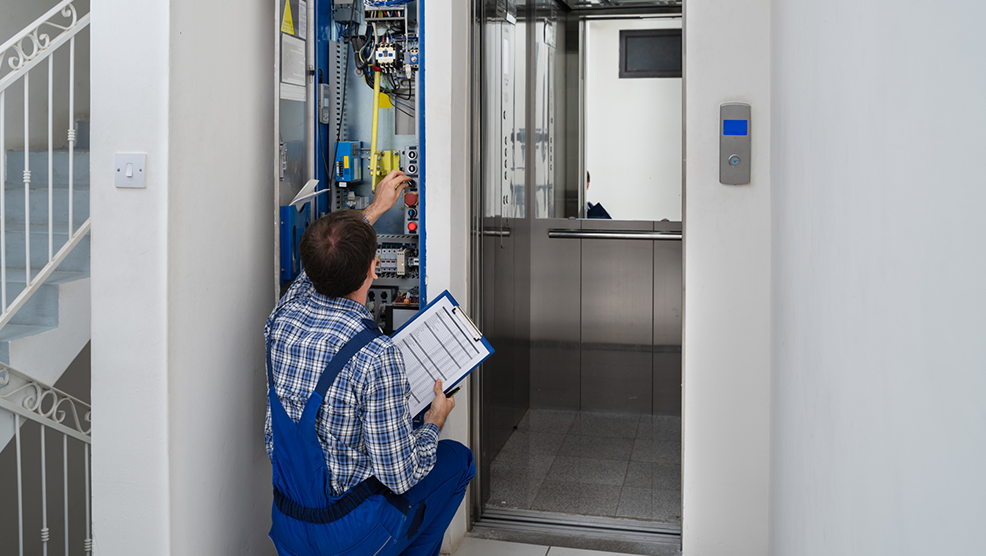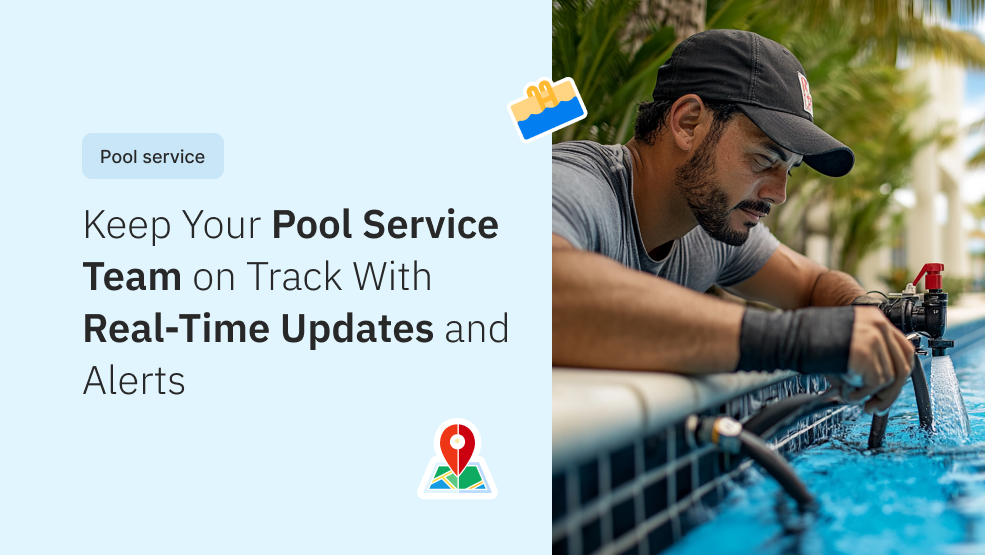Elevators are a necessary fixture in every multi-story commercial and residential building, with many jurisdictions mandating their installation. Therefore, investing in a safe and high-quality elevator that suits your property is crucial. Maintaining your elevator is equally important for safety and longevity and should not be overlooked. Optimal maintenance and regular inspections promote the smooth operation of your building. Make elevator care a priority to keep your property running efficiently.
Regular maintenance helps better performance, avoids breakdowns and accidents, ensures regulatory compliance, and improves safety. According to the National Elevator Industry, Inc. (NEII) report, there are an estimated 900,000 elevators in the United States, each serving an average of 20,000 people per year. That means approximately 18 billion elevator rides are taken every year.
Need for regular elevator maintenance.
Elevators are intricate machines comprised of hundreds of complex moving parts that require regular maintenance to ensure top-notch functioning. Proper upkeep of these systems enables property owners to address minor issues before they turn into costly problems, extending the life of the equipment. To enhance performance and afford users a swift, pleasant ride, regular elevator maintenance is a must.
7 Important Reasons for Regular Elevator Maintenance
Arranging regular elevator maintenance is crucial for various reasons, as it guarantees the safety of both passengers and employees while enhancing the efficiency of the elevators.
Here are seven reasons why you invest in regular elevator maintenance:
1. Safety
Safety is one of the most crucial aspects of elevator maintenance. Elevators are one of the most frequently used facilities in any residential or commercial building, and as such, they need regular maintenance to ensure that they are safe for everyday use.
Unmaintained elevators have the potential to cause serious injuries and can even lead to fatalities in some cases. The most common reason for elevator breakdowns could be the depreciation of the equipment, and if this goes unnoticed, you could be putting your customers and employees at risk.
Arranging regular elevator maintenance could prevent breakdowns by indicating any potential risks or safety hazards and fixing them before they become problems.
2. Reliability
In high-rise buildings, elevator breakdowns can be inconvenient and disruptive.
Regular elevator maintenance helps avoid frequent breakdowns and prolongs the life of elevators.
Despite regular maintenance, elevators may eventually require an overhaul, and the system needs to be replaced. Maintaining elevators regularly will reduce downtime and enhance reliability, preventing breakdowns.
3. Efficiency
The elevator’s efficiency is one big reason for regular maintenance. Elevators are complex machines. They rely on different types of equipment for proper functioning. With time elevator ages and deprecates and loses its efficiency.
Unmanaged elevators are prone to regular repairs and breakdowns and become less reliable. This can lead to frustration and inconvenience for customers,
Regular elevator maintenance helps you determine the problems beforehand and fix them before they could cause disruption and prolong the elevator’s lifespan.
4. Compliance
Elevators rely upon severe well-being guidelines, and customary support is important to guarantee consistence with these guidelines. The inability to ensure somewhere safe guidelines can prompt fines, legitimate obligations, and reputational harm.
Elevators are bound by safety regulations and standards that mandate regular maintenance and inspections. Maintaining elevators in good condition is vital to uphold compliance with these requirements, mitigating the risk of penalties or legal complications.
5. Avoids the breakdown
Every time maintenance or repair service is conducted, it prolongs the life of the elevator, meanwhile preventing bigger problems from arising. Sometimes just a small repair or adjustment can keep the elevator reliable.
Prolonging the maintenance or much-needed repair may worsen the problem over time, eventually turning into a bigger, more costly repair or replacement.
Aside from protecting you from legal liability, preventive elevator maintenance has other benefits as well. For example, by catching small problems before they become big ones, you can help extend the lifespan of your elevators and avoid the need for costly repairs or replacements down the road. And because well-maintained elevators are more efficient than those that aren’t, you can also help save on energy costs over time.
6. Cost-adequacy
Elevator repairs can be expensive,
By identifying issues early on during routine inspections and maintenance, the associated costs are typically much lower. Refrain from paying attention to preventive maintenance, on the other hand, often leads to the escalation of problems. Similar to cars, having a maintenance plan for elevators can prevent components from prematurely failing, potentially saving you from complete replacements and instead requiring only minor repairs.
Customary support diminishes fixed costs and broadens the life expectancy of elevators for houses. It additionally decreases the risk of mishaps, which can prompt costly lawful settlements and expanded insurance installments.
7. User Satisfaction
Proper elevator upkeep ensures smooth and silent operation, resulting in a more comfortable and enjoyable experience for passengers, as nobody likes waiting for an elevator.
Moreover, regular safety inspections play a crucial role in identifying potential issues before they turn into significant risks. This proactive approach helps prevent accidents and injuries, which can have severe legal and financial consequences.
Elevator Maintenance Checklist
Maintaining elevators in good working condition is paramount to providing a safe and reliable service to both customers and employees.
To ensure ongoing safe and reliable elevator operation, it is crucial for property owners to prioritize elevator repair and inspections. Neglecting proper care is one of the leading causes of accidents involving elevators. Regular inspections play a vital role in maintaining the highest levels of elevator safety.
A well-planned inspection is essential, and utilizing an elevator maintenance checklist can be a valuable tool for those responsible for lift maintenance. It helps ensure that inspection crews pay attention to all small yet crucial elements during their inspections.
Here is the elevator inspection checklist:
Inside the Car
- Check the smooth functioning of the doors without any obstructions.
- Look for any damage to the ceiling, handrails, and walls.
- Ensure all lights, including those on the control panel, are functioning.
- Test the emergency phone, ensuring it quickly connects to the local fire department or emergency services.
Outside the Car
- Replace any burned-out lights on each floor.
- Inspect the panels and clearances.
- Examine the smoke detector and fire alarm system.
In the Elevator Machine Room
- Test the smoke detector and fire alarm system.
- Check oil levels and ensure proper lubrication of all systems.
- Inspect electrical wiring for any fraying or defects.
- Verify there is sufficient headroom for technicians.
- Remove any obstructions that hinder access to the equipment.
On Top of the Car
- Ensure the emergency exit hatch is easily accessible.
- Test the brakes and inspect the mechanism for good condition.
- Check cables for signs of wear.
- Look for indications of rodents or vandalism along the hoistway.
In the Pit
- Make certain the area has proper access.
- Inspect the pit to make sure it has the necessary clearance.
- Check the car frame for signs of damage.
Conclusion
Routine maintenance of elevators is of utmost importance. Regular maintenance of elevators ensures safety, improves efficiency, and prevents breakdowns. It’s an investment that yields long-term benefits, contributing to building safety and reducing operational costs.
Regular inspection and maintenance help identify and address even the smallest of issues efficiently before they become a problem.
Utilizing a well-structured elevator inspection checklist and following a comprehensive maintenance plan helps mitigate safety hazards, reduces the need for expensive repairs, and ensures compliance with regulations, resulting in reliable elevator performance.






